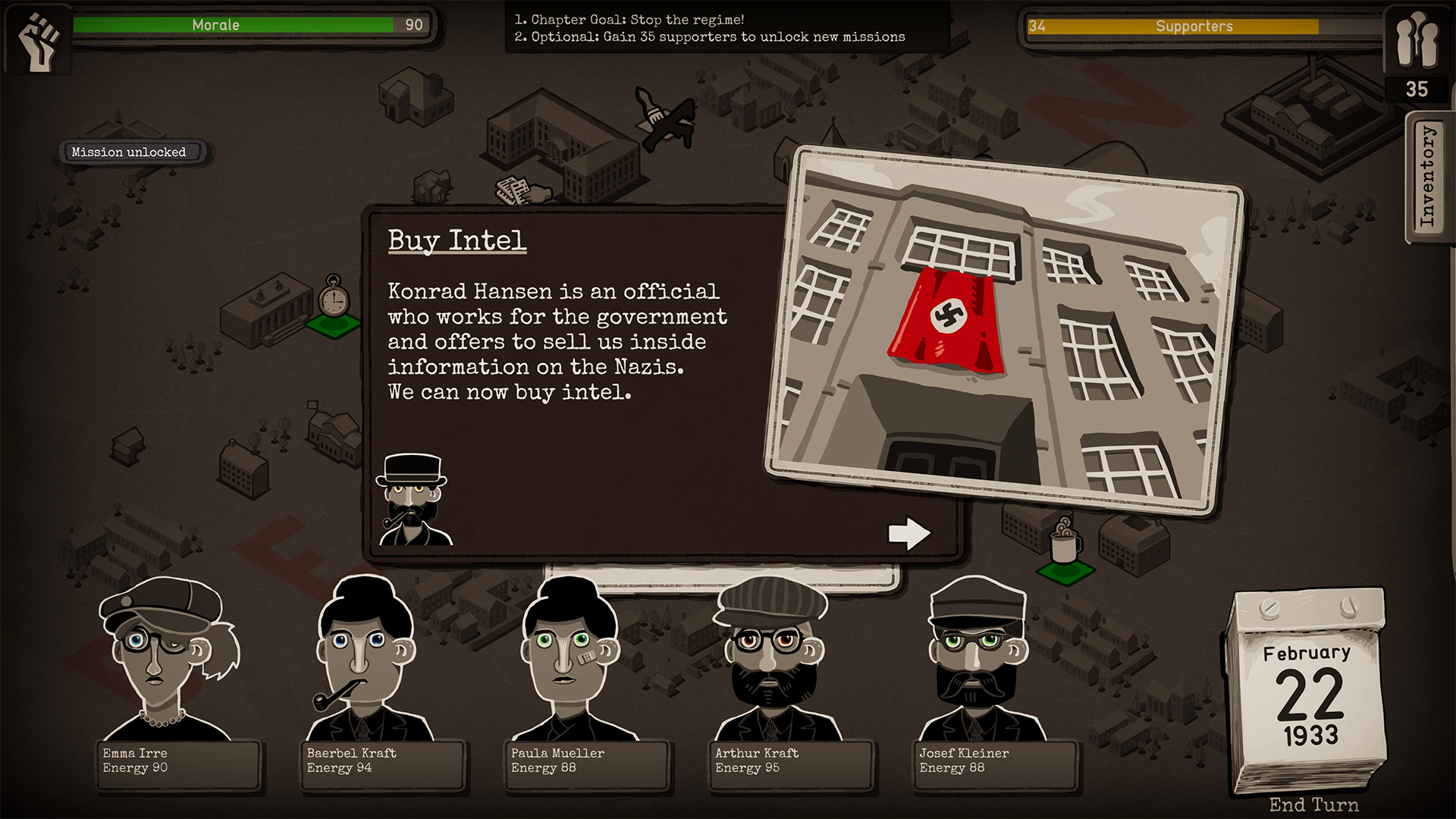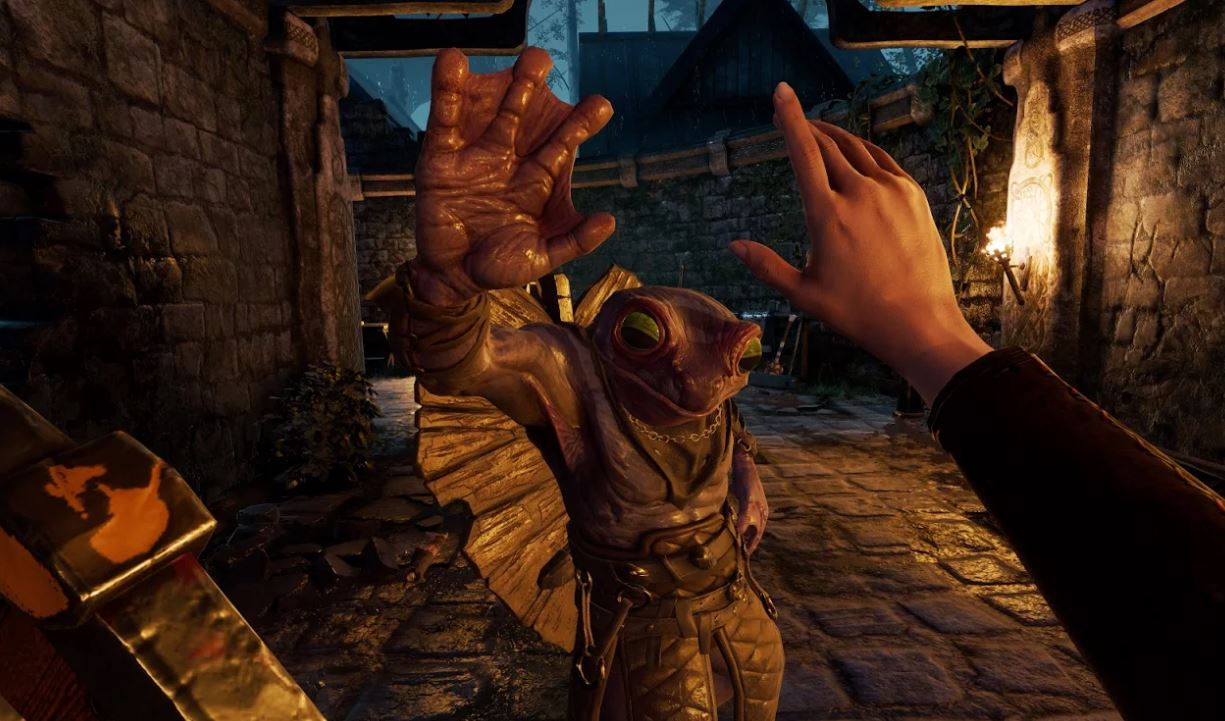
Even though this year’s E3 was itty-bitty compared to previous shows, it was still far too big to see everything. It’s a show built for the big publishers but propped up by all the fascinating games and indie projects without massive budgets scattered about the LA Convention Center. Whenever there’s a couple minutes to kill between appointments, you can bet we’re running around the halls in search of interesting games buried beneath the bodies in line for Cyberpunk and the Avengers and whatever Nintendo’s working on.
Now that E3 smoke has cleared, here are some of the games that stood out against the big publishers at E3 this year.
Carrion
One step beyond Grizzled Space Marine on the videogame power fantasy scale is Sentient Chunk of Flesh, and that’s Carrion. You play as an escaped Cronenberg blob in what looks like a military-controlled research facility. As a sentient flesh blob would, your goal is to escape, consuming as much human flesh as possible on the way. I’m told Carrion is designed in the vein of a Metroidvania, in that as you eat more people and grow, you’ll gain new abilities that let you access new areas of the labyrinthine map.
As an interesting twist, you can ‘reject’ mass as well, as your total mass determines what special ability you have access to. A simple example: I had to eat several men to grow large enough to unlock a dash ability, making me capable of busting through hard wooden surfaces. But to open a door, I had to reject a good chunk of mass to regain the ability to spit out a little spidery arm. It fits into small crevices, which makes pulling switches through small cracks easy-peasy. Thing is, the smaller you are, the more vulnerable you become. Puzzles and abilities and contrived genre names aside, moving around as the blob feels great and looks disgusting, and bashing men off the wall with your meaty tentacle arms doesn’t get old, which I’m a touch worried about. Let’s keep this one from my psychiatrist, yeah? —James Davenport
Mosaic
Mosaic is depressing. It’s a reflection of the daily grind. You play as a blank-faced avatar in a grey world, side-scrolling your way to work day in and day out. The daily commute is one aspect of Mosaic’s cycle. You’ll wander towards the office, taking the time to brush your teeth, get dressed, eat, and stumble out the door with access to your phone at all times. Emails and texts live on the phone as a bit of epistolary storytelling, but the BlipBlop app is perhaps the most painfully real aspect of Mosaic’s design.
You can choose to divert from the expected daily routine and find little marks of beauty in a dismal late-capitalist world—I watched a butterfly in an extended musical sequence for some time—or you can wander with your head down in your phone, playing a clicker game stripped of any narrative or aesthetic conceit. I played it for far too long, already a willing victim of insidious design hooks. These phone-gazing, side-scrolling sections are just one part of Mosaic’s daily cycle, too. At work, you’ll engage in what I’m told is something like Excel meets an RTS, mundane dressing for a resource management game at your nondescript corporate gig. If it sounds miserable that’s because life is pretty miserable, and Mosaic wants to take a bath in that misery before, I hope, encouraging the player to poke holes in their avatar’s tiny, boxed-in life. What lies beyond? You tell me. —James Davenport
Atomicrops
Atomicrops is a bullet hell shooter and Stardew Valley mouth-kissing behind the roguelike shed. Everything orbits your garden, which you dig out and plant seeds in much like Stardew. They’ll require water from a nearby well, but more importantly, you’ll need to fertilize those buds and the only place to get that stuff is in the wild. Pick a direction and go exploring, busting up outposts for weapon upgrades, stat modifiers, and special abilities while fending off hordes of monsters.
Keep up to date with the most important stories and the best deals, as picked by the PC Gamer team.
Bring back the spoils to the farm before the day is up to make sure you can fertilize and harvest the day’s crops. A boss monster might spawn in an attempt to screw up all your hard labor, but if you get out alive a helicopter will take you back to down where you can sell your goods, court some of the locals, and participate in seasonal events. It’s a wild premise, but it works. Think of it as a bullet hell roguelike based on a daily cycle where you need to not only dodge said bullets, but play a simple resource management game. The absurdity is underlined by some bright, grotesque cartoon pixel art from Toby Dixon, the artist behind Nidhogg 2. —James Davenport
Struggling
As a sentient lump of flesh (there’s a motif developing here) two players each control an arm in an attempt to pull the pitiful creature to safety. Struggling is a struggle. It’s a clumsy, frustrating test of dexterity, patience, and cooperation. I was able to complete the first level by myself, my hands white and sore from gripping the controller so firmly. I cursed at full volume in a hall filled with colleagues. It’s a good thing you didn’t hear me.
Getting the two-armed flesh lump through pools of acid, up jagged cliff faces, and through uncomfortably tight tunnels wasn’t easy on my lonesome. With another human—well, I wouldn’t want to test any of my relationships like that. The key, I found, is having one beer. Having one beer doesn’t make Struggling any easier, but it helped me find the right mental state to play it in. It’s a dumb, intentionally frustrating torture race designed to turn the couch into a safe space for friends to be mad at and jostle one another within. Throwing elbows, exclamations like ‘Why did you do that, Greg, you fool.’ or ‘You ripped my fucking arm off, Greg.’ And so on. It’s Mount Your Friends with a goal: Try Not to Hurt Your Friends. —James Davenport
Phantom Brigade
I didn’t get any hands-on time with this turn-based tactical mech game (Chris did), but that doesn’t matter. I just want to explain its ridiculous hook. Phantom Brigade looks a lot like Battletech in that you’re moving a platoon of mechs across a map with the intent of out-maneuvering the opposing team of mechs to see who is the true Tactics Lord. But, like Into the Breach, you can see the AI opponent’s next move during your turn. Unlike FTL, since Phantom Brigade isn’t grid-based, you can also scrub through the timeline of the AI opponent’s next move during your turn and choose the precise moment to initiate your turn along that timeline.
Think of it like a YouTube video you’re scrubbing through to find the moment the clown makes a fart noise or whatever, except it’s a squadron of mechs trying to kill you, and you can choose the precise moment to interrupt their turn. I’m not even sure what kind of tactical possibilities it’ll allow for, but it’s something I haven’t seen in the genre before, which is reason enough to keep an eye pinned on this one. —James Davenport
Through the Darkest of Times

With all the bells and whistles and fun of E3, it's a bit weird to sit down and play a game that will depress the hell out of you. But Through The Darkest of Times is well worth playing: it's an engrossing and extremely relevant historical strategy game set in Berlin as the Nazis are seizing power. You play as a member of the resistance, trying to recruit new members, manage their morale, raise money from supporters, and take actions to fight back against the Third Reich throughout Berlin.
Each turn represents a week, and you spend your turn assigning the procedurally generated characters to carry out tasks, like inspiring others to join your cause, printing and distributing anti-Nazi literature, attending anti-Nazi rallies, smuggling people out of the country, and so on. Characters have traits that can aid them in their tasks, but my small pool of rebels wasn't always up to the challenge. Several were arrested by the Gestapo and died in jail.
Between turns there are events that make you face incredibly tough text-based decisions. Nazi soldiers are harrassing an old man on the street: do you intervene and risk your life to help him? You meet a good friend in a bar and discover he's supporting the Nazis: do you try to talk him out of it or give him up as a lost cause? Every single step you take and choice you make feels fraught with peril. Even in my short play session, I felt deeply attached to my little group of citizens risking their lives to defy the Nazis. I deliberated over every choice and it was difficult to stop playing.
Through the Darkest of Times is being developed by German studio Paintbucket Games. It spans the years the rise of the Third Reich in 1933 to the collapse in 1944 and 1945. —Chris Livingston
Creature in the Well
Part dungeon crawler, part bullet hell, part… pinball game? Yep, and it works. In Creature in the Well you're a robot descending deeper and deeper into a dungeon, hacking and slashing your way through beautifully designed levels to find and destroy the massive, creepy, skeletal creature at the bottom. And what you're slashing at are orbs that ricochet around the levels, hitting bumpers, rebounding off walls, and reflecting against enemy turrets. You can charge your shots and keep several orbs knocking around at once in this top-down action game with some truly gorgeous art design.
I'm not only interested in playing it again when it releases this summer but also learning more about its story and lore. You get occasional glimpses of the creature as it peers at you from its pit or reaches its massive hands up from the abyss to pull the floor you're standing on down deeper. Creepy and cool. —Chris Livingston
Scavengers
I like to think of Midwinter’s first game as a session-based, multiplayer Far Cry. Several squads of four land on a massive wintry map sharing the same goal: as a whole, collect enough valuable minerals before the storms move in and your ride takes off back to space. A plague has overrun earth and turned it into Planet Snow, populated by desperate bands of humanity’s last survivors and, uh, sentient flesh monsters. Back on that theme one last time. You’ll need to craft weapons and stay warm and well fed throughout each 30-or-so minute session, and the most resources for staying in good health are located at outposts populated by flesh people or mad, sad men. Taking them out tops off your supplies, as does hunting bears, wolves, deer, and elk.
But outposts are conduits for chaos. An errant bear or two might pass through while you’re trying to clean one out, and then some goo monsters might spawn, and then another team might roll in and try to take your team out in all that mess. Scavenger’s big hook is that there are incentives for working with and taking out other teams. Maybe you need some supplies to just make it to the ship in one piece. Maybe you want the bonus XP from stealing the other team’s crystal supply. But maybe you need them and appeal for assistance. Scavengers is a session sandbox built on that will-they-or-won’t-they axis, and even in such an early state it’s an excellent story generation machine. Look for a chance to play it in beta later this year. —James Davenport
Zombie Army 4: Dead War
In an E3 where nothing much was playable, the latest in the Sniper Elite co-op spin-off series was a real relief. Essentially, I spent about 20 minutes killing zombies in a train graveyard with a sniper rifle, shotgun and electric fist—and it was great fun. The shotgun was even more fun than the sniper rifle, which was a nice surprise, and I feel like it has the makings of my next four-player diversion, joining the likes of Sea of Thieves and Vermintide 2.
It's nothing particularly new, but this game features big levels set across Italy and progression systems to keep you playing. Plus, tonally it's approximated a weird John Carpenter '80s vibe, particularly with the music. I had what can only be called a fun time playing it. —Samuel Roberts
Asgard's Wrath

I certainly didn't expect a VR game to give me the biggest grin at E3, but Asgard's Wrath is full of surprises. We actually tried to sign it for this year's PC Gaming Show, but couldn't quite get the deal done. What I played in the demo felt a bit like Baby's First Skyrim, but with the substantial benefit of actually being present in the experience. Having largely ducked out of VR since Thumper, using an Oculus Rift S was also super impressive in terms of comfort and graphical quality. Interestingly, Matt Kraemer, senior creative director at Sanzaru Games told me the team is targeting "high-end VR enthusiasts" with the rigs to match. And it showed.
Asgard's Wrath boasts the best, least nausea-inducing answer to player movement I've experienced yet. You use the left thumbstick to move back and forth, while the right stick angles you 20 degrees in either direction with each tap. Minor early wobble aside, I was soon able to navigate the beach on which my shield maiden character had washed up after her row boat had been flipped by the god Tyr.
In addition to playing as the shield maiden, you also get to swap out for an unnamed god. Once in that zoomed out mode you can pluck up animals and convert them into anthropomorphised hybrid manimals. In the demo that meant creating a shark man who could be used to solve puzzles by, um, chowing down on corpses found in suspended cages which would then activate levers and suchlike. What puzzles it has are pretty basic, as is the melee combat and diet RPG elements, but all these aspects are again elevated by the fact that it's you in there, doing the stuff. Throwing a sword to slice a distant rope or placing a rat you've grabbed from the floor into a statue's mouth to open a door made me smile in a way most of the things I saw at E3 didn't. This one will be worth seeking out. — Tim Clark
Iron Harvest
If you played Company of Heroes, you may remember one of its major omissions: big dieselpunk mechs. Iron Harvest is the answer. It plays a lot like Company of Heroes, with a cover system that will feel instantly familiar to Relic fans, but is set in an alternate history 1920s—during a post-Great War era that's teeming with robots.
There are plenty of interesting and deadly units to build and fight, and lots of natural conflict points as you battle over limited resources. And though I enjoyed the one skirmish I was able to play, King Art Games says the real meat of Iron Harvest will come from its three singleplayer story campaigns. It's always good to see a new RTS rear its head, and Iron Harvest seems like a confident tribute to one of the best. —Phil Savage
The collective PC Gamer editorial team worked together to write this article. PC Gamer is the global authority on PC games—starting in 1993 with the magazine, and then in 2010 with this website you're currently reading. We have writers across the US, UK and Australia, who you can read about here.


